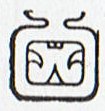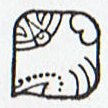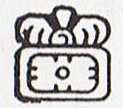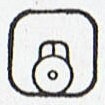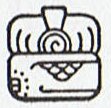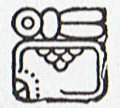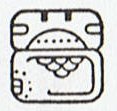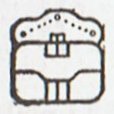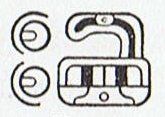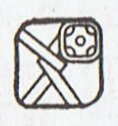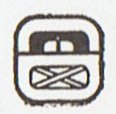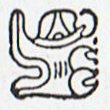|
TRANSLATIONS
From his high position in the sky Osiris is abruptly sent down by way of the 'Nile' (Milky Way) to reach the ecliptic, then carried by the 'tide' in his 'canoe' to the coast of Phoenicia: ... the coffin had been carried by the tide to the coast of Phoenicia, where, at Byblos, it was cast ashore. A tamarisk immediately grew up around it, enclosing the precious object in its trunk ... Phoenicia has a name referring to the Phoenix, the bird of fire. Celestial fire was brought there and it happened at spring equinox, the point where the 'Nile' connects to the 'earth' (ecliptic). Phoenicia is located at the eastern end of the great sea. A tamarisk quickly grew up around the 'bird', then was felled and became a pillar in the palace of the king. It held the roof high, and it certainly was spring sun who had pushed the sky roof high - what happens above happens below. Osiris is no moon god at the beginning, he is the sun. In the text of G his journey begins at Ga1-25:
Ga1-24 is the only ariki glyph shown en face in G, presumably a sign of (winter) solstice. Next voyage comes after summer solstice, after Osiris has been raised as a pillar in the palace and Isis has discovered his abode. She became the nurse of the child of the house, and reveals her nature during the night: ... The great goddess gave the infant her finger instead of breast to suck and at night, having placed him in a fire to burn away all that was mortal, flew in the form of a swallow around the pillar, mournfully chirping. But the child's mother, Queen Astarte, happening in upon this scene, shrieked when she spied her little son resting in the flames and thereby deprived him of the priceless boon. Whereupon Isis, revealing her true nature, begged for the pillar and, removing the sarcophagus, fell upon it with a cry of grief so loud that the queen's child died on the spot. Sorrowing, then, the two women placed Osiris's coffer on a boat, and when the goddess Isis was alone with it at sea, she opened the chest and, laying her face on the face of her brother, kissed him and wept ... When Isis flies like a swallow the summer solstice has not yet occurred, I think. When she removes the sarcophagus from the pillar the solstice is past. In the text of G the new boat is apparently depicted at Gb1-24:
When Osiris is away from the sky (as if dead), the measure is 12 * 19. When he is present in the sky the measure could be 472 - 228 = 244 = 4 * 61. The sun is present during 228 days and then we will see him in the night sky during a quarter (a square) measuring 61 nights on each side. On the other hand, 496 - 228 = 268 = 4 * 67 could be the correct figure. Next page among those defining a year with 496 days:
Immediately, we must ask ourselves whether the figure inside is 'Osiris'. As to Gb3-5 I have already suggested so much:
The 'fires' in the sky are travelling on the deep blue sea of the sky inside a protecting hull or on top of a raft. I guess the two different tao forms in G refer to a raft respectively to a canoe covered by skin:
Obviously the designer of the G text has tried to make a distinction between the two forms of tao. Myth says the Ark of Noah was square in form, the form of a raft. Beyond winter solstice the proper form of tao should be a square and 5 * 5 = 25 could very well be a hint as to the nature of this vessel. Beyond summer solstice another season of water comes, and it could be named after the moon. The vessel of the moon is a canoe of course. The ancient Egyptian ships were made by cedar planks imported from Phoenicia, sewed together because that was the old method used for canoes covered by skin. The skin in question could be that of 'Robin Hood', the spring sun himself; in the language of rongorongo, the hide of tapa mea:
... It seems likely that Llew's mediaeval successor, Red Robin Hood, was also once worshipped as a stag. His presence at the Abbot's Bromley Horn Dance would be difficult to account for otherwise, and 'stag's horn' moss is sometimes called 'Robin Hood's Hatband'. In May, the stag puts on his red summer coat ... The sky roof is a kind of skin, as if we were living inside a tent. The concept of a 'black cloth' is saying that when 'night' comes, the daytime 'red cloth' (tapa mea) is changed into black. This does not happen at 'noon', but at autumn equinox or later. Neither of the two types of tao in G ought to illustrate the black cloth, but maybe Ga1-16 (8 * 61) does:
There is no 'eye' on the figure inside, and already by being inside he cannot be seen. I guess the skin used around a drum 'is' the 'hide of the sky', and hidden inside this hide, the god must be. "... the drum, the most powerful device of the shaman, representing the Universe in a specific way, is the unmistakable grandchild of the bronze lilissu drum of the Mesopotamian Kalu-priest (responsible for music, and serving the god Enki/Ea). The cover of the lilissu drum must come from a black bull, 'which resembles Taurus in heaven', says Thureau-Dangin. Going further, W. F. Albright and P. E. Dumont compared the sacrifice of the Mesopotamian bull, the hide of which was to cover the lilissu drum, with the Indian Ashvamedha, a huge horse sacrifice which only the must successful king (always a Kshatrya) could afford. They found that the Indian horse must have the Krittika, the Pleiades, on his forehead, and this too, acording to Albright, is what the Akkadian text prescribes concerning the bull ..." (Hamlet's Mill) By the way, I should also quote: "... the Samoyed binds the pitiable 'World-observing Man' to his sledge with an iron wire of thirty fathoms length. We do not know yet what this means precisely. We know that victorious characters use the vanquished as this or that vehicle, saddle horse, etc. - Marduk uses Tiamat as 'ship', as does Osiris with Seth; Ninurta's 'Elamitic chariot, carrying the corpse of Enmesharra' is drawn by 'horses who are the death-demon of Zu' (Ebeling, Tod und Leben, p.33); Tachma Rupa rides on Ahriman for thirty years around the two ends of the earth (Yasht 19.29; Yasht 19, The Zamyad Yasht, is the one dedicated to Hvarna) - but these code formulae have not yet been broken." (Hamlet's Mill) The drums sounding at winter solstice are trying to awake the sun to his duties, a way to communicate with the god. The Maya calendars, I remember, indicate where the drum should be applied, viz. at Pax and Vayeb:
Maybe there is a parallel between these two places and our two 'hidden sun' glyphs:
The distance 192 days will be translated into more than 9 Mayan 20-day months, however, a much longer distance than that between Pax and Vayeb. Instead, we should relate 296 to the end of the year as defined by 29.5, i.e. 354 or 2 months away. The 'black cloth' covers 2 months, from Hua Reva to the end of the solar year. Which makes sense, because there should be 10 months in a 'year'. |




